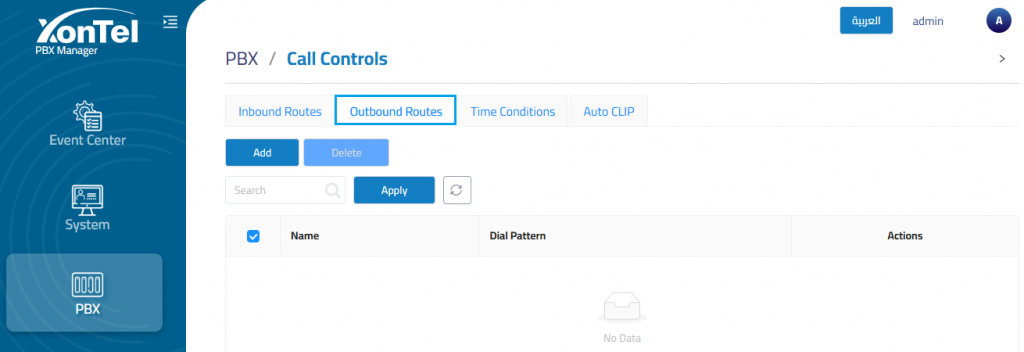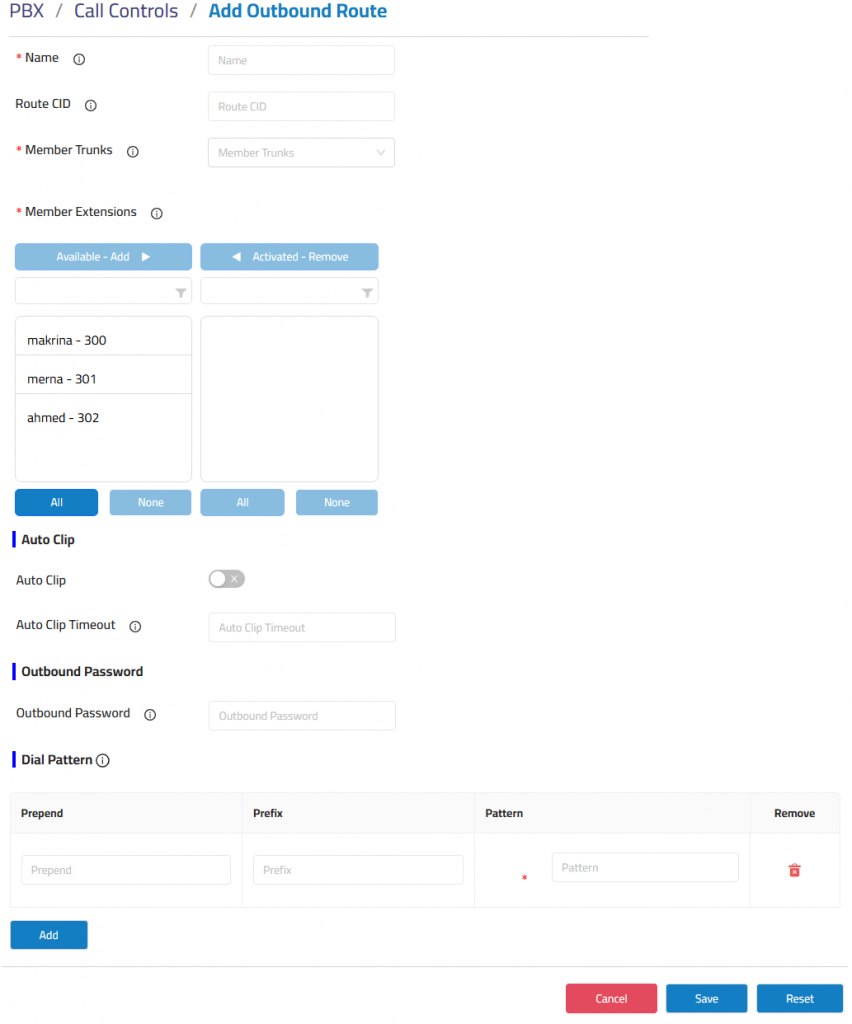The Outbound Route section defines how internal users can make calls to external numbers through selected trunks. It controls which extensions are allowed to dial out, what trunk they use, and how numbers should be formatted.

Add Outbound Route

Name: Assign a descriptive name to the outbound route for easy identification.
Route CID: Optionally set a Caller ID for this route. If configured, it will override all other Caller IDs except the Extension-level CID.
Member Trunks: Select the trunk(s) that calls matching this route will use.
Member Extensions: Specify which extensions are permitted to use this outbound route.
Auto CLIP
The Auto CLIP section allows you to enable automatic call return mapping, ensuring that incoming calls from previously dialed numbers are routed back to the original extension.
Auto CLIP: Enable this option to activate Auto CLIP functionality.
Auto CLIP Timeout: Define how long Auto CLIP records are retained. Once the time expires, the system automatically deletes the record.
- Note: Once an incoming call matches an Auto CLIP record and is routed to the original extension, that record is automatically removed from the Auto CLIP table.
Outbound Password
You can enhance security by requiring users to enter a password before making outbound calls through specific routes.
Outbound Password: Specify the password users must enter to complete a call through this route.
Dial Pattern
Dial patterns define the format of phone numbers that will use this outbound route.
- Prepend: Digits added before the number when a match is found.
- Prefix: Digits removed from the dialed number when a match is found.
- Pattern: The set of rules used to match dialed numbers.
Dial Pattern Rules:
X: Matches any digit from 0-9
Z: Matches any digit from 1-9
N: Matches any digit from 2-
[xxx]: Matches any digit within the brackets (e.g., [123] matches 1, 2, or 3)
“.” (dot): Wildcard matching any number of digits